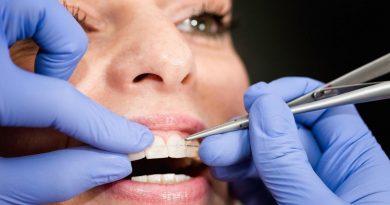Effective Dressing Strategies for Leaky Legs
Leaky legs, a condition medically called lymphorrhea, is a challenging ailment often associated with chronic conditions like lymphedema. It involves the leakage of lymphatic fluid from the legs, causing discomfort and potential complications if not properly managed. This post delves into effective dressing strategies for managing leaky legs, a crucial aspect of holistic care for this condition. Consider reading 7 Tips For Managing Leg Leaking Water for a broader understanding of managing this condition.
Contents
Absorbency is Key
The primary function of a dressing for leaky legs is to manage the exudate effectively. This fluid, composed of protein, water, white blood cells, and plasma proteins, can cause skin damage if not adequately absorbed. It’s essential to select dressings that prioritize absorbency, especially in the initial stages of treatment when fluid output is at its highest.
As the condition progresses, the dressing needs may change. Once the fluid leakage decreases, the focus should shift to dressings that balance absorbency with skin protection. This is particularly important for patients with sensitive skin or those under compression bandaging. Silicone interface dressings can be beneficial in these stages as they prevent trauma to the skin upon removal, a critical consideration as the exudate volume reduces with therapy.
Skin Protection
Enhanced Barrier Protection
Protecting the skin surrounding the affected area from leaky legs is critical. Barrier films like Cavillon cream can shield the peri-wound area from additional damage. This protection is about preventing skin breakdown and maceration and creating a defensive layer against external irritants and contaminants. A healthy barrier can significantly reduce the risk of infection and promote faster healing.
Moreover, this strategy does more than heal existing wounds; it also maintains the skin’s overall health. Keeping the surrounding skin intact and resilient is essential, as it plays a crucial role in treating and managing lymphorrhoea. It’s a proactive approach, preventing complications before they can start.
Hydrating and Nurturing Skin Care
In addition to barrier protection, maintaining proper skin hydration is crucial. Over-drying or excessive moisture can both be detrimental. Emollient-based skincare regimens are beneficial for balancing the skin’s moisture levels. These products, often rich in lipids and fatty acids, help rebuild and maintain the skin’s natural protective barrier.
The removal of hyperkeratotic skin scales is also important. This process not only aids in keeping the skin smooth but also enhances the effectiveness of moisturizers and barrier creams. By removing these scales, skincare products can penetrate more deeply and work more effectively. The goal is to foster a skin environment conducive to healing – well-hydrated but not wet- reducing the likelihood of further complications and enhancing the healing process.
Compression as a Companion to Dressing
Compression therapy is a cornerstone in the management of lymphorrhoea. It aids in reducing leakage by providing necessary pressure to the affected limbs. Compression garments or bandages should be tailored to the individual’s needs and adjusted as the condition improves. Super absorbent dressings under compression are also recommended to manage exudate effectively and prevent skin maceration.
Addressing Secondary Infections
Leaky legs are susceptible to secondary infections due to the constant presence of moisture. Antimicrobial products like Microdacyn can help reduce microbial load, limit fungal overgrowth, and improve the rate of wound healing. These products are essential to the dressing strategy as they create an optimal healing environment.
Lifestyle and Home Remedies
Besides medical interventions, lifestyle, and home remedies play a significant role in managing leaky legs. Light exercises, elevating the affected limbs, and ensuring proper hydration are essential. These measures support medical treatments and can lead to better outcomes. Staying hydrated is crucial as it reduces fluid retention and helps the body eliminate excess fluids.
Conclusion
Managing leaky legs requires a comprehensive approach, focusing on immediate symptom management and long-term care strategies. Effective dressing strategies are pivotal in this regard, as they directly influence the healing process and the overall quality of life of individuals with this condition. Remember, the journey to managing leaky legs is a collaborative one involving healthcare providers, caregivers, and the individuals themselves. Continual learning, adapting to changing needs, and embracing medical and lifestyle interventions are key to effective management.




